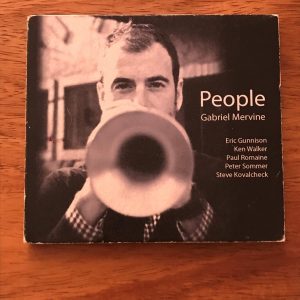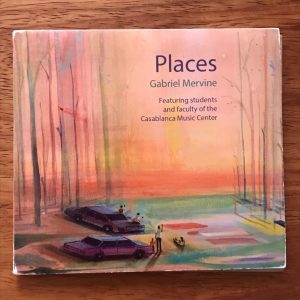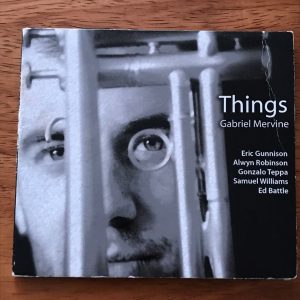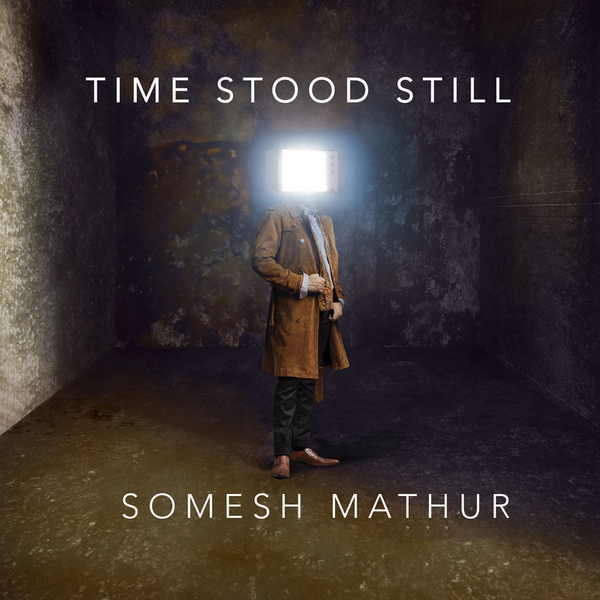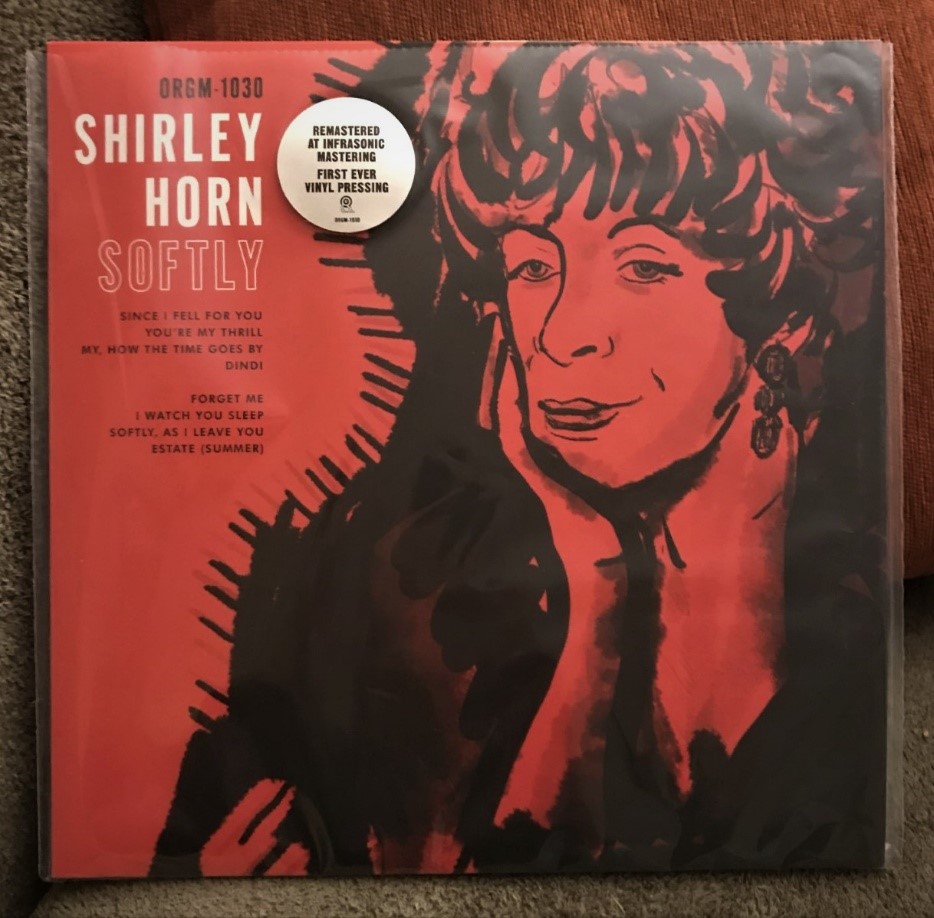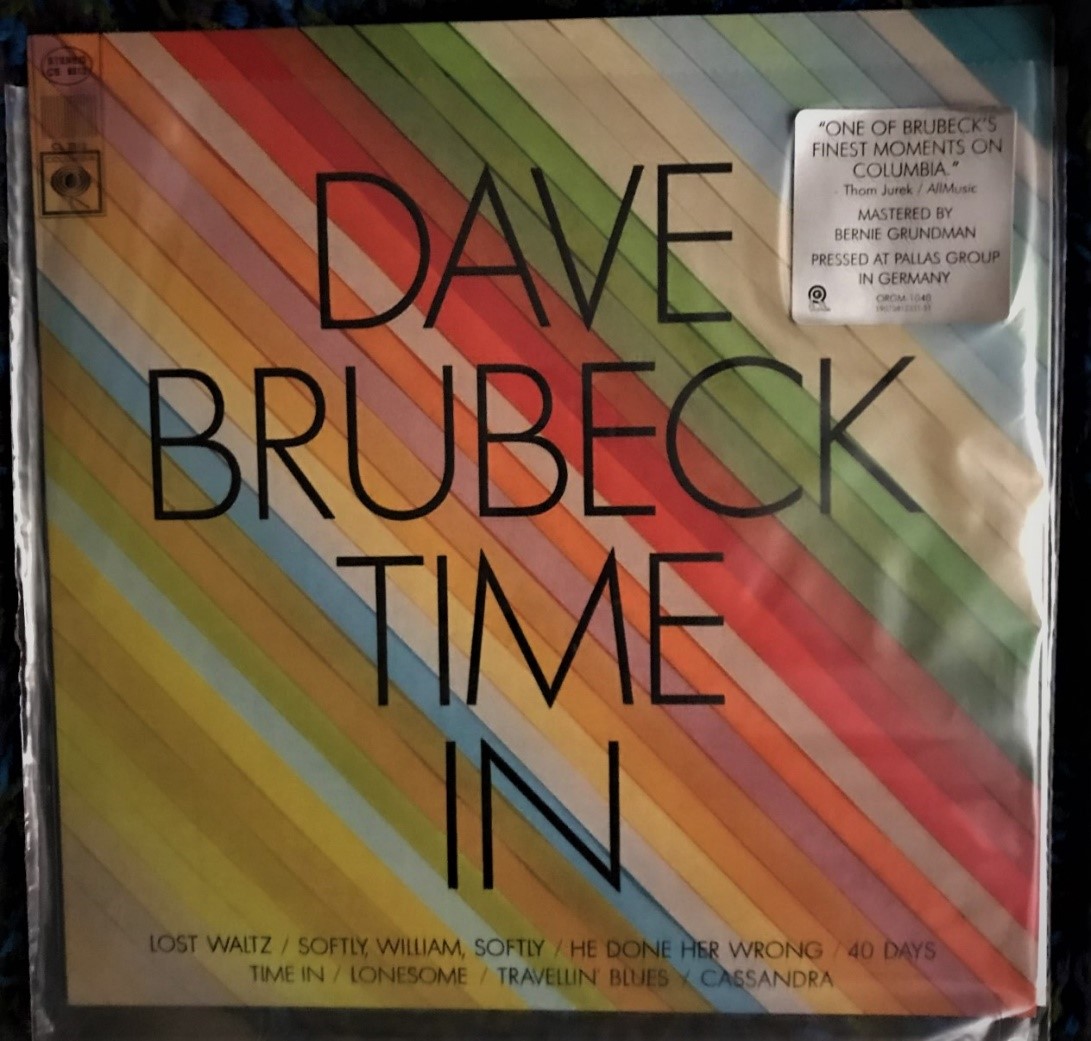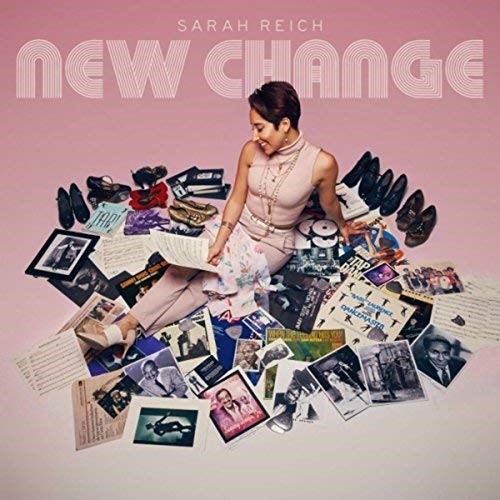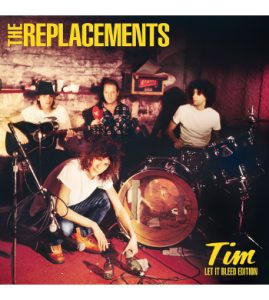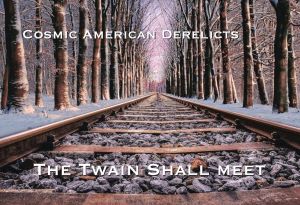Gabriel Mervine's People, Places, and Things. Synergy Records SMCD 80040-2, 80043-2 and 80044-2, CD $12.98 each at Amazon.com
Before I can introduce you to Gabriel Mervine, an incredible and ambitious jazz trumpet/flugelhorn player and composer, I have to introduce you to Uncle Don. He's not my uncle, by the way. Don Marsh is Colleen's uncle, married to Colleen's mother's sister, although I've known him for many years. He's a recently retired educator, so he's well-read and intelligent. He's also incredibly funny and genial. What I didn't know about Don is that he's an avid jazz fan. Until very recently, he didn't realize I wrote about jazz.
"Uncle Don is reading all your reviews on your blog," Colleen informed me while she was recently visiting Don and wife Ann at their new vacation home in Cabo San Lucas. My first thought was "All of them? Poor guy. Isn't there a beautiful beach in front of him? What, is it raining?" But I was flattered, and I looked forward to the next time I would see him knowing that we now had plenty of things to discuss and share.
Before I knew it, Colleen told me that Uncle Don had a friend back in Denver who was a jazz musician, and that he wanted to send me a few of his CDs to get my opinion. I know what some of you are thinking—it's the reviewer's curse of having everyone approach you and saying "I have a friend who's just starting out in the business and he really needs to get some exposure, and I was wondering…" (This is also known as the Mixtape Conundrum.) My experience has been completely different, however—some of my favorite musicians are friends of friends such as jazz pianist Todd Hunter (courtesy of Dan Muzquiz), or tenor sax player Daniel Louis White (courtesy of my old Texas buddy Chris Perez). Sometimes I know them personally as in the case of my cigar-smoking buddy and Fall of Humanity drummer Michael Rafferty. His brand of heavy, heavy metal usually isn't normally my cup of tea, but man is he an impressive machine gun of a drummer.
Within a few days, Uncle Don had shipped me three Gabriel Mervine CDs, one called People, one called Places and the last, not surprisingly, called Things. About ten seconds into the first track, a vibrant cover of Lee Morgan's "Somethin' Cute," I let out a big sigh of relief. This guy Mervine is good, really good. As I moved through each of the three CDs, I noticed that each one had separate themes and a completely different feel. He's ambitious, too. He's trying to do something different. Finally, I noticed that the sound quality of all three CDs was special. This isn't some project done on the cheap by a guy just starting out. Are you sure this is just a friend of yours, Uncle Don, or you a fan?
As it turns out, it's a little of both. Uncle Don met Gabriel Mervine while the former was playing the Denver jazz scene, and the two started talking and soon became friends. Don, being very knowledgeable about jazz, probably recognized Mervine's talent straight away and knew it would be worthwhile to connect with him.
People actually predates the other two releases in the trilogy by a couple of years. As Uncle Don, explains it, Mervine always wanted to release all three together. There was a delay between the first one and the next two, which prompted his fans to bug him for a couple of years until he finished the task. This reminds me of my sax-playing friend Daniel Louis White, who has been working on his direct-to-disc Natural Consequences project for years now. Sometimes you need to go out and play for a while before you can come back with the right energy to finish up in the studio, or sometimes life just gets in the way.
That said, People is the engaging one, the amiable and outgoing member of the trio that is set on making a great first impression. Mervine and his band—sax player Peter Sommer, guitarist Steve Kovalcheck, keyboardist Eric Gunnison, bassist Ken Walker and drummer Paul Romaine—perform that magic trick of instantly sounding right and whole the moment they start playing. There is no sparring, no walking around in circles and feeling out the notes. They just dive in together and start swimming like an Olympic relay team, taking turns yet delivering a victory as a team. Perhaps that's why Mervine has titled this album as he has—it's about the people around him as well as the people who have inspired him. "The calling to be an artist comes from inside," he declares on the liner notes before citing Edward Hopper, Winthrep Sargent, and Jean Sibelius on their persuasive reasons for using music instead of language. People need to choose their path and stay true to it.
That first impression of rightness is quickly followed a confirmation of Mervine's style. He is mellow and smooth as horn players go, choosing to be quick and calm rather than brash. The other five musicians mirror those sensibilities with an effortless charm, and even when each member is contributing a breakneck solo everything is a clearly of a unified whole, a chugging machine that can cover any terrain. This consistency brings these eleven tracks together so that there is flow between Mervine's original compositions and standards such as Horace Silver's "Me and My Baby" and Freddie Hubbard's "Osie Mae." In other words, this is the type of album put out by old pros, the ones who have worked with everyone in the business and know how to play each and every song the right way.
Places, like People, states its business in the first few notes with a very different sound. In late November of 2015, Mervine travelled to Morocco "to begin a week-long tour and recording with long-time friend and multi-instrumentalist M'hamed El Menjra." While the two met back in Colorado, the purpose of this trip was to visit with the students of the CODA: Casablanca Music Center. Each of these international covers—everything from Django Reinhardt to Antonio Carlos Jobim to Eden Ahbez to Paco De Lucia—is performed by a different group of musicians in addition to Mervine and Menjra. (In nearly half of the tracks, the two go it alone.) That means Places doesn't have the beginning-to-end flow as People, but it does have something equally intriguing—intimacy.
Reinhardt's "Babik," which opens the album, is performed by the two old friends (Menjra plays the guitar, of course, as one should in a Reinhardt composition). From there we launch into a swirling, joyous feast of world music, dominated by Latin jazz and hot Parisian jazz and featuring remarkable students such as vocalists Sara Moullablad and Dia Ettayabi, guitarist Hicham Benabderrazik and many others. What's remarkable about this collaboration is how the students bring their cultural influences and backgrounds to each performance while coming together as a recognizable jazz entity. This is also the album where you discover how versatile Mervine can be, changing up his styles, adding a mute, breaking up his sound while still allowing that trademark smoothness to come through.
If you're impressed by the pure and exciting jazz on People, then the second album will astonish you with the breadth of Mervine's vision. One more thing: I've heard at least a dozen versions of "Nature Boy" in the last year, and the one included here featuring just Ettayabi, Menjra, and Mervine is by far my favorite. It is stark and beautiful and haunting, just like it's supposed to be.
Uncle Don warned me that Things was the tricky and adventurous one. Luckily, I was prepared—especially after reviewing releases from Dave Soldier, Michael Moss, Oliver Lake, and Jason Hao Kwang in recent months. From this warning I was expecting a blast of sustained chaos, but it never came. Instead, Mervine uses the last installment of the trilogy to focus on improvisation and how abstract thought can influence it. He uses, with the lone exception of Eric Gunnison, a different ensemble than with People. These sessions, captured back in February 2017, involved a group of musicians who were playing together for the first time. They weren't given a chance to rehearse—everything was recorded spontaneously with these seasoned pros using their instincts to deliver the synergy and stick together. It's an ambitious undertaking, but you should know by now that Mervine is a very ambitious and thoughtful person when it comes to his music.
As a result, Things has a much looser feel than the more measured People. While drummer Alwyn Robinson, bassist Gonzalo Teppa, and sax player Samuel Williams are partially responsible for that—they have different styles than the first ensemble—the tunes here were chosen for the opportunities they present in terms of flexibility. A majority of the tracks are Mervine's this time, but you can see the daring nature in blending these with Coltrane's "Like Sonny." He does deliver free jazz in a judicious way, such as in the delirious "Free" which was "written" by the entire ensemble, but it's also surprising when the group comes together as one and introduces compelling melodies and rhythms. Neophytes to the form will not find these moments as daunting as most.
I've heard many impressive jazz debuts in the last couple of years, but the sheer scope of Gabriel Mervine's trilogy is unheard of in this day and age. (A fellow music scribe and friend calls this the "Hitting the Ground and Running" syndrome.) While I admire all three albums equally, I keep thinking that most jazz fans will gravitate toward one or another based upon their tastes. Yes, there's a Mervine for you, and I have no idea which one that will be. If you're thrilled with the fact that one single horn player can deliver so many different types of jazz while exhibiting a thoroughly recognizable style, you'll need the entire trilogy and make your choice at your leisure.
Uncle Don, you were right about this guy. Hopefully we can get together soon so I can get more of your recommendations. You seem to know your stuff!




